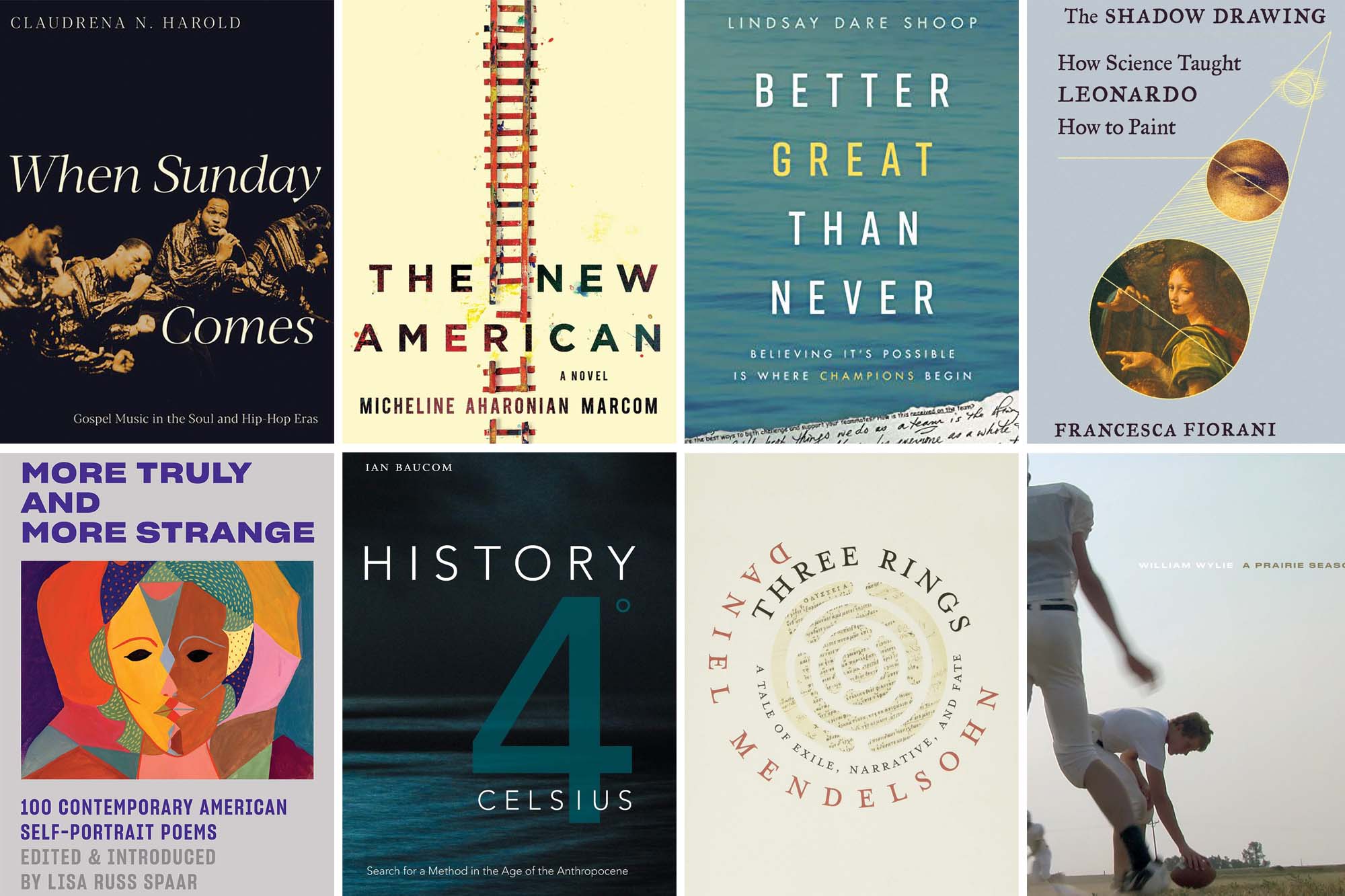From living and aging well to navigating conversations in our divided era; from a new assessment of Leonardo da Vinci to how we get hooked on all kinds of art and popular culture –a University of Virginia authors published some fascinating new books in the latter half of 2020.
Here is a sample that might appeal to a range of readers, culled mainly from the list of new faculty books on the Office of the Vice President for Research Top Shelf page and including a few books by UVA alumni as well. The list is arranged alphabetically by author.
- Ian Baucom, dean of Arts & Sciences and professor of English, “History 4° Celsius: Search for a Method in the Age of the Anthropocene.”
The “Anthropocene” is a recent term to describe the current geological era since human activity became the dominant influence on the environment. In this scholarly work, Baucom argues that climate science, Black studies and postcolonialism are all intertwined. - Timothy Beatley, Teresa Heinz Professor of Sustainable Communities in the School of Architecture, “The Bird-Friendly City: Creating Safe Urban Habitats.”
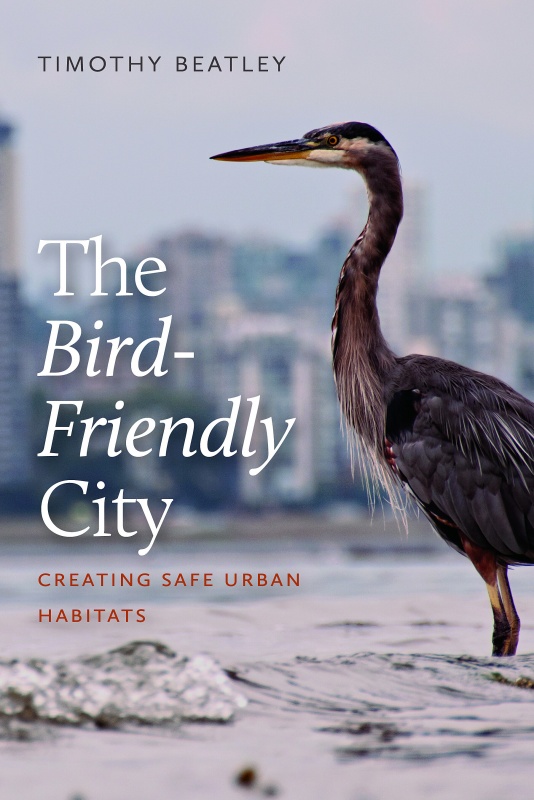
Beatley takes readers on a global tour of cities that have created urban design with birds in mind. Efforts span a breadth of approaches in public education, urban planning and design, habitat restoration, architecture, art, civil disobedience, and more.
Some of Beatley’s examples include “catios,” enclosed outdoor spaces that allow cats to enjoy back yards without being able to catch birds; a public relations campaign for vultures; and innovations in building design that balance aesthetics with preventing bird strikes on glass façades. - Daniel Becker, professor of general medicine, geriatrics and palliative care, “2nd Chance.”
A physician for more than 30 years who tried to retire but keeps going back to work, Becker is also a poet. In this book, his poems cover the full spectrum of medical care and seek to understand and honor what medical professionals and patients experience. - Joseph E. Davis, research professor of sociology and member of the Institute for Advanced Studies in Culture, and Paul Scherz, Catholic University, editors, “The Evening of Life: The Challenges of Aging and Dying Well.”
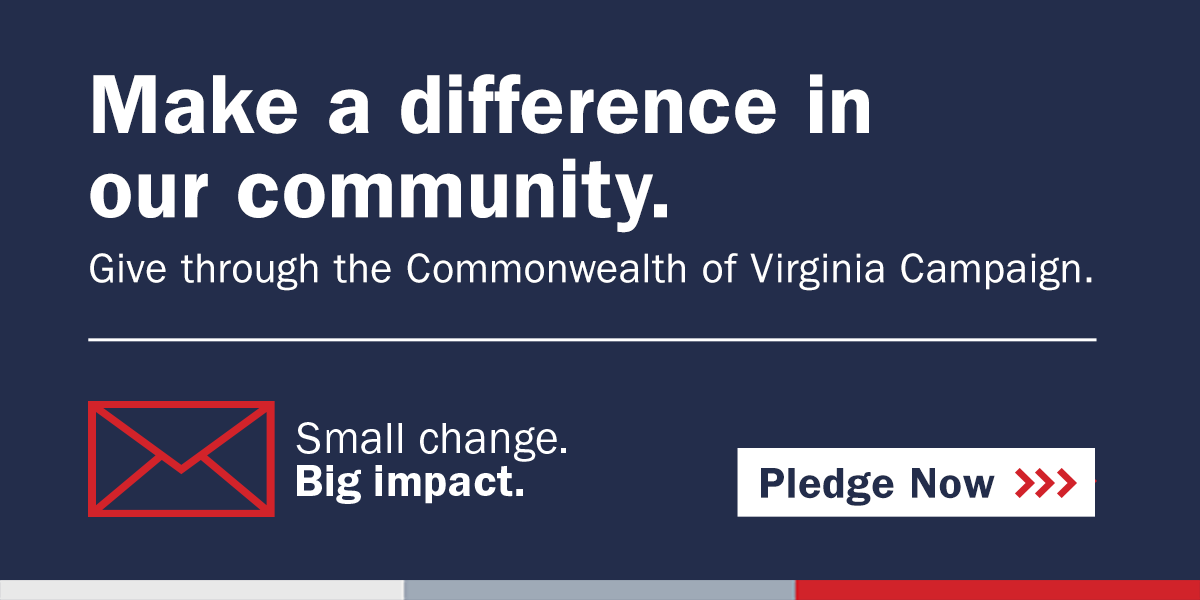
“We all, barring accident or illness, will face the problems and opportunities of aging,” Davis said in a recent interview in Psychology Today. For lay readers as well as professionals, this book’s essays explore how individuals can change as they approach these later years, and how they can view lost abilities as chances for growth and continue to be involved in their relationships and communities. - Rita Felski, William R. Kenan Jr. Professor of English, “Hooked: Art and Attachment.”
“What’s the hook?” is a question often asked about why a song or film is popular. Felski argues that “being hooked” is as fundamental to the appreciation of high art as to the enjoyment of popular culture. Drawing on a variety of examples – from Joni Mitchell to Matisse, from Thomas Bernhard to “Thelma and Louise” – Felski brings the language of attachment into her discussion of what connects audiences to works of art.
- Francesca Fiorani, art history professor, “The Shadow Drawing: How Science Taught Leonardo How to Paint.”
Fiorani seeks to dispel the misconception that da Vinci abandoned art for science and to emphasize how he explored scientific subjects like optics in his painting. Taking a fresh look at his notebooks, as well as other sources, Fiorani argues that da Vinci explored scientific concepts when he was still an apprentice in a Florence studio.
A leading authority on Renaissance art and the application of computer technology to the humanities, Fiorani also created the digital platform, “Leonardo da Vinci and His Treatise on Painting.” - Gary W. Gallagher, John L. Nau III Professor in the History of the American Civil War Emeritus, “The Enduring Civil War: Reflections on the Great American Crisis.”
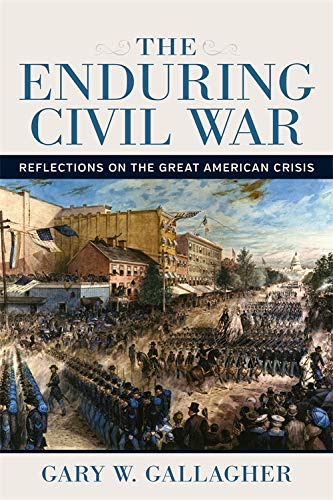
This book collects short essays Gallagher wrote for the Civil War Times history magazine, beginning in 2009. He addresses issues about the Civil War era that continue to be relevant today, such as ongoing controversies over Confederate statues. The tension between history and memory forms a theme throughout the essays.
“I stress the importance of what actually happened, while also showing that successive generations remember historical events and personalities in starkly different ways,” he writes in the introduction. - Claudrena N. Harold, professor of history and of African American and African studies, “When Sunday Comes: Gospel Music in the Soul and Hip-Hop Eras.”
Harold details the creative shifts, sonic innovations, theological tensions and political assertions that have transformed gospel music, and revisits debates about groundbreaking recordings and the genre’s incorporation of rhythm and blues, funk, hip-hop and other popular forms.
Reviewer Robert M. Marovich wrote, “‘When Sunday Comes’ is the book we’ve been waiting for – a thoughtful and thought-provoking analysis of the impact contemporary singers, songwriters and musicians have made, and continue to make, on gospel music.” - E. D. Hirsch, professor emeritus of education and humanities, “How to Educate a Citizen: The Power of Shared Knowledge to Unify a Nation.”
More than three decades after his controversial book, “Cultural Literacy: What Every American Needs to Know,” urged educators to emphasize in their teaching what he deemed the most important facts about America, Hirsch again argues that relying on “child-centered learning” leaves out essential knowledge about topics such as history, geography, science and civics, contributing to the achievement gap. - Micheline Aharonia Marcom, English professor in the Creative Writing Program, “The New American.”
This novel recounts the epic journey of a young Guatemalan American college student, a “dreamer,” who gets deported and decides to make his way back home to California. - Jeanne Martinet, 1980 alumna, “Mingling With the Enemy: A Social Survival Guide for Our Divided Era.”
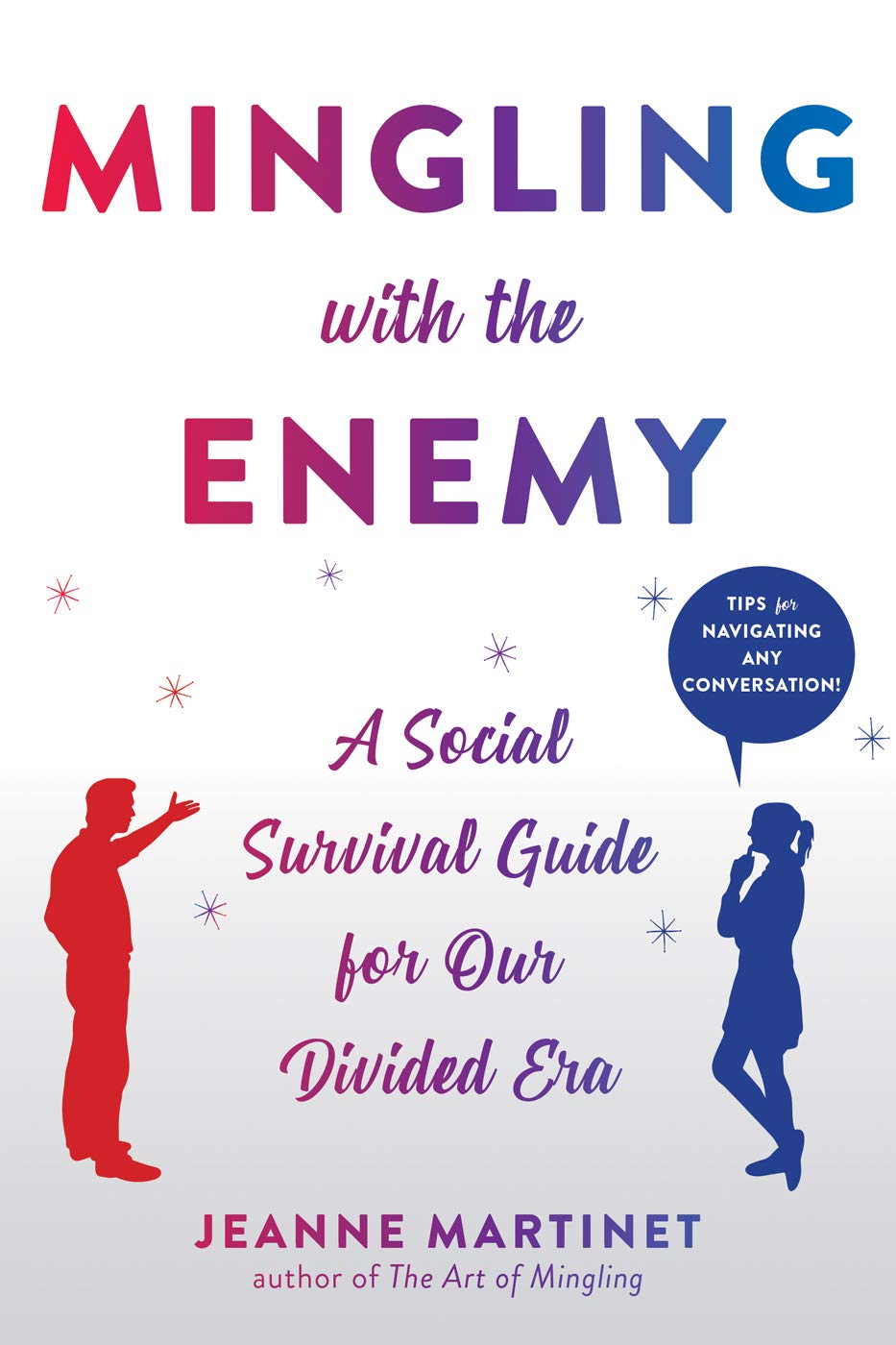
In a nation that is more polarized than ever, with most of us overwhelmed by social media and the 24/7 news cycle, our social lives are taking a hit – even before the pandemic made typical gatherings unsafe or cancelled them. Martinet sees our courtesy and compassion eroding and aims to help with her new book, providing a road map, with insight and humor, for steering through interactions to avoid hurting each other and to encourage connections. - Daniel Mendelsohn, 1982 alumnus, “Three Rings: A Tale of Exile, Narrative, and Fate.”
Mendelsohn’s new book, published by UVA Press, is a hybrid of memoir, criticism, biography and fiction. It weaves together the lives of three exiled writers who turned to the classics of the past to create masterpieces of their own: François Fénelon, Erich Auerbach and W.G. Sebald. - J. Kim Penberthy, Chester F. Carlson Professor of Psychiatry and Neurobehavioral Science, and J. Morgan Penberthy, yoga and meditation instructor who works at the American Psychological Association, “Living Mindfully Across the Lifespan: An Intergenerational Guide.”
With a mix of empirical data, humor and personal insight, the authors (who happen to be mother and daughter) cover a significant topic or question in each chapter, including self-worth, anxiety, depression, relationships, personal development, loss and death. Along with exercises that clients and therapists can use in daily practice, they include personal stories and case studies, interwoven throughout with their distinct intergenerational perspectives. - Dennis Proffitt, Commonwealth Professor Emeritus of Psychology, and Drake Baer, journalist and editor, “Perception: How Our Bodies Shape Our Minds.”
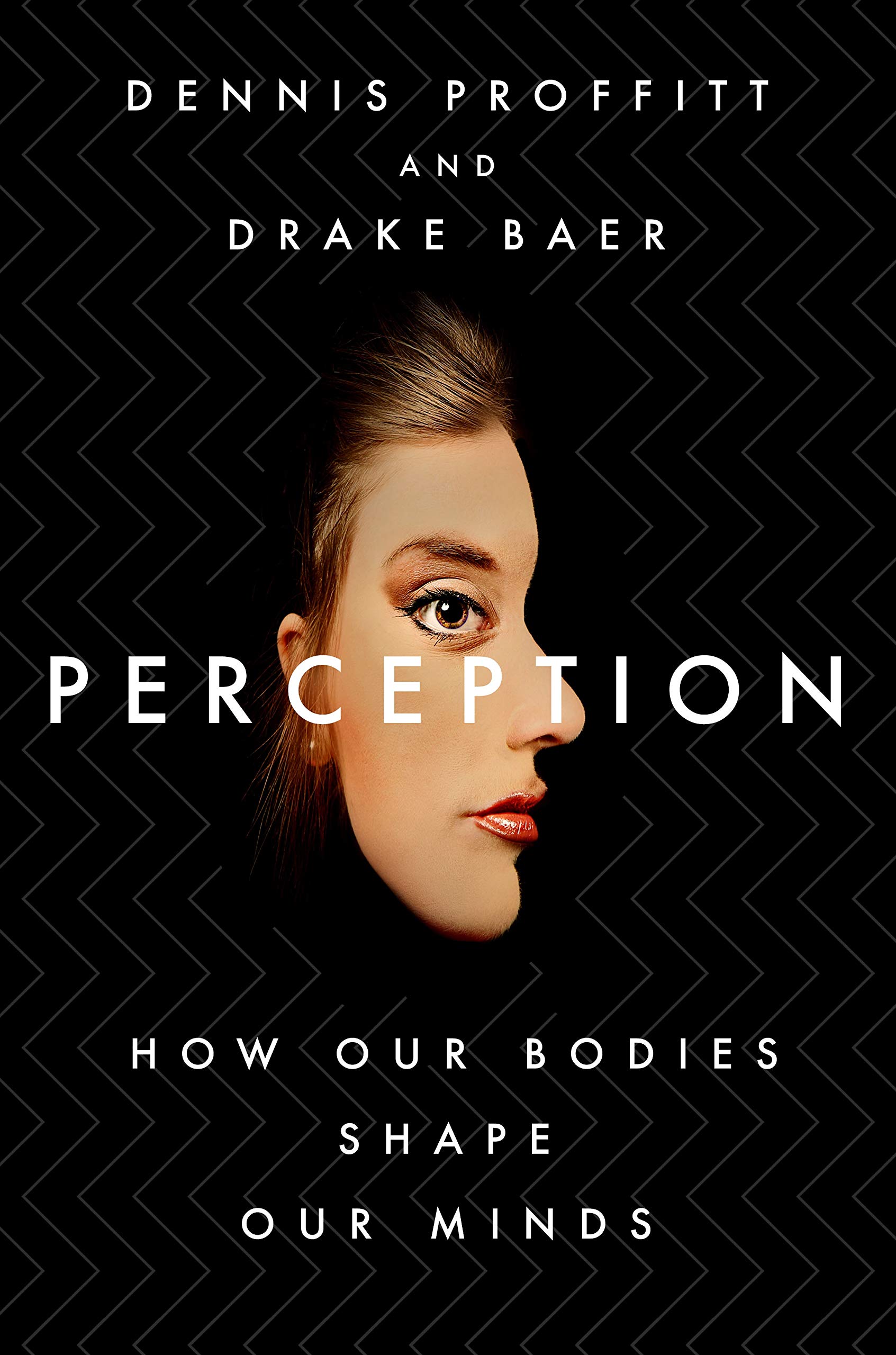
Over decades of study, Proffitt, who’s still doing research in his perception lab, has shown that we are each living our own personal version of “Gulliver’s Travels,” where the size and shape of the things we see are scaled to the size of our bodies, and our ability to interact with them. Stairs look less steep as dieters lose weight, baseballs grow bigger the better players hit, hills look less daunting if you’re standing next to a close friend, and learning happens faster when you can talk with your hands.
The positive effects of viewing ourselves from this embodied perspective include greater athletic, academic and professional achievement, more nourishing relationships and enhanced personal well-being. - Jahan Ramazani, University Professor and Edgar F. Shannon Professor of English, “Poetry in a Global Age.”
Building on his previous work in “A Transnational Poetics,” Ramazani broadens his lens to discuss modern and contemporary poems in relation to world literature and current debates over ecocriticism, translation studies, tourism and cultural geography. - Lindsay Dare Shoop, 2003 alumna, “Better Great Than Never: Believing It’s Possible Is Where Champions Begin.”
Shoop, who hails from Charlottesville, writes that when she discovered rowing, it changed her life. She dedicated the book to Kevin Sauer, the head coach of UVA’s varsity rowing program and Shoop’s coach when she was a student-athlete.
In her book, she shares what she has learned about practicing self-care to address mental and physical stress and live a full life.
Shoop went on from UVA to win Olympic gold in rowing (the women’s eight) in 2008. Now she is a rowing coach at the University of Miami, a speaker and lifelong athlete, as well as a National Rowing Hall of Fame inductee. - Lisa Russ Spaar, professor of English, director of Creative Writing Program and of the Area Program in Poetry Writing, editor, “More Truly and More Strange: 100 Contemporary Self-Portrait Poems.”
Spaar, who edited this volume and wrote the introduction, started exploring the topic while teaching a January term course several years ago, “Selfies Old and New: The Self-Portrait in Visual Art and Poetry.” The collection presents self-portrait poems from mid-20th century to present day. - Brian Teare, associate professor of creative writing, guest editor, “Best New Poets 2020: 50 Poems from Emerging Writers.”
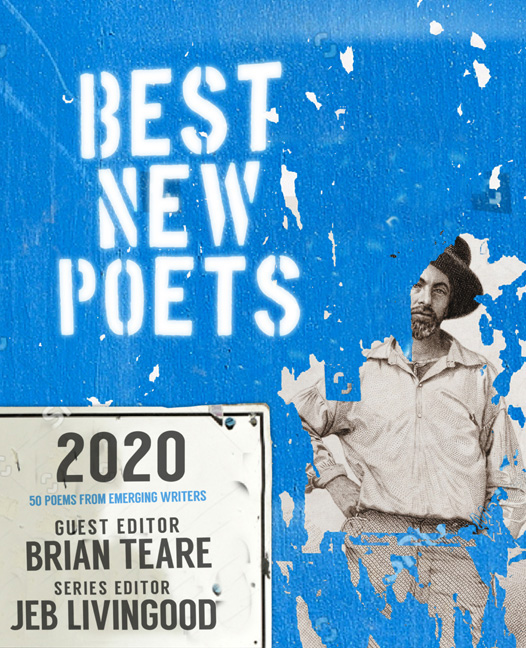
This annual anthology is made up exclusively of work by writers who have not yet published a full-length book. The 50 poems included in this eclectic sampling represent the best from the many that have been nominated by the country’s top literary magazines and writing programs, as well as some 2,000 additional poems submitted through an open online competition.
The “Best New Poets” series has been published for 15 years under the leadership of Jeb Livingood, associate director of UVA’s Creative Writing Program. - William Wylie, Commonwealth Professor of Art and director of the studio art department, “A Prairie Season.”
In Wylie’s sixth book of photography, he presents a new subject: small-town high school football. In this book, he follows one season of the Prairie School near New Raymer, Colorado, capturing glimpses of the team’s camaraderie and communal rituals, set against the vast horizon.
“On Friday nights in fall,” he writes, “with a moon rising over the plains, surrounded by all that space, and the families and teachers and ranchers and rough-necks gathered in the bleachers under the lights to watch a game, there might not be any better place to be.”
Media Contact
Article Information
December 14, 2020
/content/aging-poetry-high-school-football-uva-authors-offer-new-books

